War Hunter: The Interplay of Conflict and Music
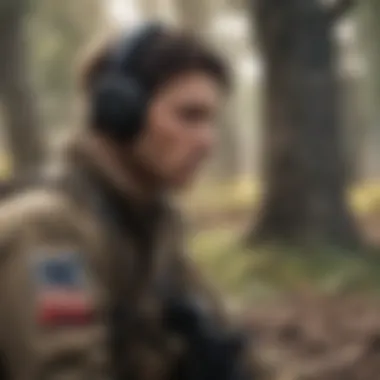
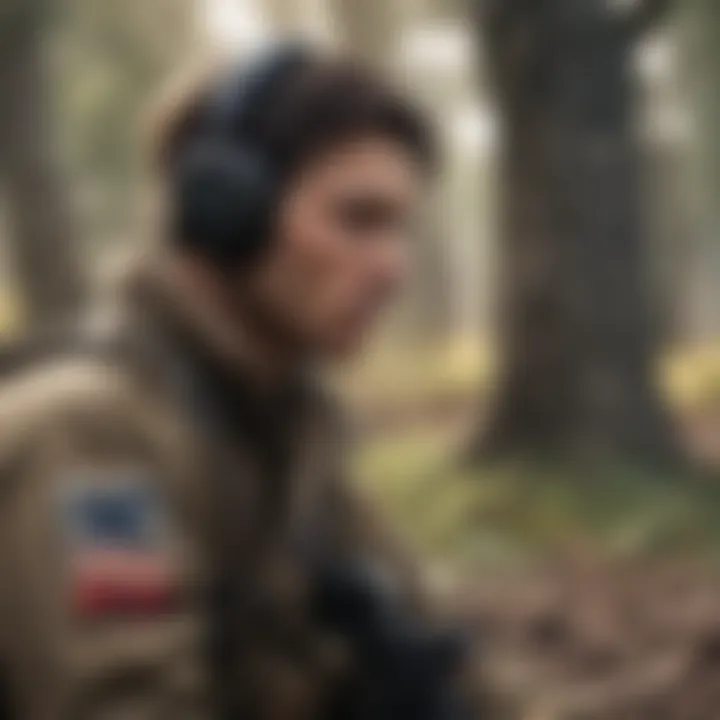
Intro
The confluence of war and music has been a persistent theme across cultures and epochs. From folk songs sung by soldiers on the battlefield to electric anthems decrying conflict, the ways in which music reflects and shapes our understanding of war is intricate. This article explores the phenomenon of the "war hunter," a conceptual framework through which musicians engage with conflict narratives. By delving into the historical context, psychological impacts, and artistic expressions found in war-themed music, we uncover a multi-faceted world where sound becomes a vessel for profound social commentary.
Artist Profile
Biography and Background
Examining the artist profile is essential to grasp the motivations behind their war-themed music. Take, for instance, the legendary Bob Dylan. Born in 1941, Dylan grew up during the Cold War, witnessing the turbulent socio-political climate. His music, imbued with a sense of urgency, often reflects the zeitgeist of his time, especially during the Vietnam War. This period also marks the rise of protest music, which defined much of his early work. Understanding such artists helps contextualize the music they create and the messages they convey.
Major Influences and Inspirations
Bob Dylan, along with others, drew from various influences. Key factors include:
- Personal Experiences: Many artists have had direct encounters with war. These experiences often inform their music.
- Historical Events: Significant wars and conflicts have influenced music trends and themes.
- Literature and Art: The influence of war literature, poetry, and visual arts has inspired musicians to explore complex themes.
Song Analysis
Theme and Lyrics Breakdown
A close analysis of specific song lyrics reveals layers of meaning. Songs can evoke emotional responses, convey political messages, or explore personal loss. For example, Dylan's song "Blowin' in the Wind" questions societal norms and war ethics. The repetitive questioning invites the listener to reflect on moral implications.
Instrumentation and Composition
Instrumentation plays a crucial role in conveying the emotional weight of war-related music. For instance, the use of minor keys can create a somber atmosphere. Furthermore, instrumentation varies depending on the artist's style;
- Acoustic Guitar: Common in folk music, often used for its raw, stripped-down feel.
- Electric Guitar: Represents a more aggressive sound, fitting for rock anthems.
- Strings and Percussion: Enhance emotional depth and resonance.
Closure
The exploration of war in music offers a rich tapestry of commentary on human experience. The notion of the "war hunter" encapsulates how artists articulate conflict and its consequences. As we move forward in this analysis, we will continue to examine how these narratives evolve and the significance of music in shaping our understanding of war.
Preamble to War and Music
Music, in its many forms, serves as a powerful medium to convey emotions, stories, and cultural narratives. The intersection of war and music further amplifies this channel, revealing deeper significances tied to human experience during conflict. Understanding this relationship is crucial as it sheds light on how societies process the realities of war. In examining war through music, we not only reflect on historical events but also engage with the ongoing emotional and psychological impacts that conflict generates.
The idea of exploring war-themed music is essential for several reasons. First, music functions as a historical document, preserving memories of collective trauma and triumph. Second, it allows for a personal interpretation of conflict, giving voice to those affected by war. Additionally, the role that music plays in shaping perceptions of war cannot be overlooked; it provides an avenue for exploring propaganda, resistance, and community resilience.
Defining the War Hunter Concept
The term "War Hunter" encapsulates the search for meaning within the chaos of war through musical expression. Individuals are drawn to the narratives crafted in song, revealing universal themes of loss, hope, and rebellion. This concept highlights not only the musician's role but also that of the audience. Listeners often seek to connect with these narratives, grappling with the haunting echoes of conflict intertwined within the melodies. The War Hunter embodies this pursuit, illustrating the ways in which music helps to navigate the complexities of war.
Historical Context of War in Music
Throughout history, music has been intertwined with the fabric of war. From the battle hymns of ancient civilizations to modern protest songs, musicians have harnessed their art to express sentiments surrounding conflict. The evolution of war music mirrors societal changes, technological advancements, and cultural shifts. For instance, during World War I, soldiers found solace in familiar tunes, turning to songs that echoed their experiences in the trenches. Similarly, during the Vietnam War, artists like Bob Dylan articulated a growing dissent through their lyrics, becoming anthems for a generation.
Engaging with historical context offers a framework to understand the development of war music. It reveals how each period responds to the wars fought and the values held. In addition, the influence of cultural movements—like civil rights—has often infused music with messages of resistance and change during turbulent times. This historical lens enriches our comprehension of contemporary war-themed music and its ongoing relevance.
Cultural Significance of War-Themed Music
War-themed music serves not just as an artistic expression but as an important cultural artifact that reflects societal attitudes toward conflict. The music created in response to war can shape, reflect, and challenge the narratives surrounding such events. Throughout history, these themes resonate with both those directly affected and larger audiences, impacting perceptions of conflict.
Music as a Tool for Reflection and Identity
War-themed music often resonates deeply within cultural identity. It allows individuals and communities to engage with their history, providing a sonic platform to reflect on turmoil. This music often captures collective emotions and experiences, archiving societal thoughts and feelings regarding war. Notably, songs from times of conflict may act as a form of documentation, traceable through lyrics, capturing personal and communal narratives. People often turn to these songs to find solidarity or to process trauma, making it a vital aspect of the healing process.
Engaging With History
War-themed music provides listeners with an opportunity to engage with historical events. Songs can articulate their context in ways written histories may not. Lyrics often invoke imagery and emotion that enables listeners to grasp the magnitude of these events fully. By providing context, songs about war can educate younger generations about the realities of conflict, preserving the memories of those who lived through such experiences. Additionally, songs can offer varying perspectives, challenging the dominant narratives of historical accounts while emphasizing the complexity and multifaceted nature of war.
"Songs written during times of conflict often reflect the highs and lows, capturing the emotional spectrum of the experience."
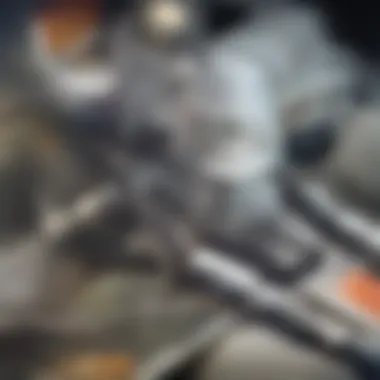

Influence on Culture and Society
Moreover, war-themed music plays a role in creating cultural dialogues. Artists who convey their viewpoints about war can ignite discussions and challenge societal norms. Music exposes the emotional landscape of war, addressing themes of loss, rage, and hope. These artistic expressions can provide a deeper understanding of the motivations behind conflicts and the implications they hold. The cultural significance of the music extends to listeners' diverse reactions, which can range from protest to acceptance, influencing social movements and shaping public opinion.
Music as a Reflection of Conflict
The relationship between music and conflict extends beyond mere representation. Music serves as a historical ledger, documenting the socio-political climate of its time. For instance, artists often respond to specific events, allowing their audience to engage with the material and emotional aspects of conflict.
Through lyrics, sound, and composition, artists articulate their perspectives, revealing the foundation of its cultural significance. For example, during the Vietnam War, songs like "Fortunate Son" by Creedence Clearwater Revival depicted a critical view of the establishment, showcasing how music can embody the dissenting voices of a generation. The sounds and themes resonate with audiences, allowing them to grapple with complex emotions.
The Role of Music in War Propaganda
Music has historically been used by governments and organizations as a means to influence public sentiments during wartime. War propaganda songs are designed to boost morale, encourage enlistment, and shape national identity. They often set a tone that aligns with governmental narratives regarding enemy forces. For instance, during World War II, the song "We're Gonna Hang Out the Washing on the Siegfried Line" served as a rallying cry for patriotism, reinforcing nationalistic sentiments.
Such songs often simplify complex issues, distilling them into catchy phrases that can be easily remembered and sung. This creates an emotional connection, enabling people to rally around a cause. By celebrating victories and portraying enemies in a negative light, war propaganda music creates a singular narrative that may not encompass the nuanced truths of conflict.
Indeed, the cultural significance of war-themed music is both profound and multifaceted. Understanding these themes leads to deeper insights into the human experience, revealing how artistic expressions of war shape and mirror societal understanding while facilitating dialogue about the complexities of conflict.
Psychological Impact of War Music
The impact of war music extends beyond mere entertainment. It plays a critical role in shaping the emotional landscape of both artists and listeners. This section explores how music dedicated to war can influence psychological states, offering insights into human emotions during conflicts. Understanding this impact is essential, as it sheds light on the connection between music and mental health in the context of warfare.
Emotional Resonance in Conflict Narratives
War-themed music often taps into deep emotional currents, resonating with listeners on multiple levels. Such music captures the collective grief, confusion, and anger that arise during times of conflict. For instance, songs capturing the sorrow of those left behind or the struggles of soldiers convey profound narratives that many find relatable.
- Empathy and Understanding: Music has the power to evoke feelings of empathy. It narrates stories of individuals affected by war, fostering a shared understanding of pain.
- Identity Formation: Artists often express their personal experiences with conflict through their music. This can help listeners grapple with their own identities in relation to these global issues.
As listeners engage with these stories, they may find themselves grappling with complex emotions. This emotional journey not only deepens their understanding of war's realities but also encourages reflection on their own lives.
Anxiety and Catharsis Through Song
The experience of war can lead to heightened anxiety for many, whether they are directly involved or affected by the repercussions. Music serves as a conduit for expressing and processing these feelings. Songs often give voice to fears and uncertainties that individuals struggle to articulate.
- Cathartic Release: Engaging with music provides an escape. Listeners can find comfort in lyrics that mirror their feelings and can experience catharsis through shared expressions of trauma.
- Managing Anxiety: Many find solace in melodies that soothe the soul. The rhythms and harmonies present in war music can assist in calming nerves, allowing listeners to navigate their emotions.
Moreover, the act of creating music can be therapeutic for artists. By articulating their experiences and feelings through song, they release pent-up emotions, which might otherwise become detrimental to their mental health. In a sense, both artists and audiences undergo a process of healing together.
"Music can define the emotions we struggle to express, giving voice to our deepest fears and providing solace in tumultuous times."
Genres and War: A Comparative Analysis
The examination of music genres in connection with war provides insights into the broader cultural context, revealing how different musical styles either reflect or respond to the experiences of conflict. Each genre possesses its own unique character and history, shaping the narratives that emerge through lyrics, rhythms, and overall emotional responses. This section aims to explore significant genres like rock, classical, and hip-hop, each serving as a lens to understand the multifaceted relationships between war and music.
Rock and Punk: Voices of Rebellion
Rock music, and more specifically punk, has long been associated with countercultural movements and expressions of dissent. The genre often channels frustration and anger against societal norms, making it a powerful vehicle for anti-war sentiments. Artists such as The Clash and Green Day have addressed war-related issues in their work, effectively resonating with audiences who feel marginalized or oppressed in times of conflict.
In contrast to more traditional or commercial music, punk often embraces raw sound and direct lyrics, encouraging listeners to question authority. Songs like "Fortunate Son" by Creedence Clearwater Revival epitomize this sentiment, criticizing the disparity faced by different social classes during the Vietnam War.
- Key elements of punk and rock's engagement with war include:
- Provocative Lyrics: Lyrics that challenge political systems and advocate for peace.
- Raucous Energy: The energetic performance style reflects a spirit of rebellion and defiance.
- Cultural Impact: These genres have inspired vast movements, influencing public opinion during wartime.
Classical Music: War and Peace Symphonies
Classical music offers a stark contrast to the rebellious tones of rock and punk. Often perceived as refined, it carries its own weight when addressing warfare and its ramifications. Composers like Benjamin Britten and Igor Stravinsky have created works that grapple with themes of conflict, utilizing orchestral arrangements to convey a range of emotions from despair to hope.
An example is Britten's War Requiem, which juxtaposes the traditional Latin Mass for the Dead with the words of Wilfred Owen, a soldier-poet of World War I. Such compositions not only serve as memorials but also encourage reflection on the human cost of war. In this way, classical music can create an immersive experience that prompts listeners to confront the reality of conflict.
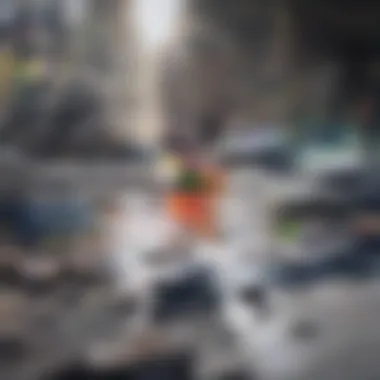

- Noteworthy aspects of classical music in the context of war include:
- Orchestral Storytelling: Using dynamics and instrumentation to depict the chaos and resolution of conflict.
- Cultural Legacy: Classical compositions have played a role in shaping cultural perceptions of war, influencing future generations of musicians.
- Timelessness: The enduring quality of classical music allows for ongoing interpretations in response to contemporary conflicts.
Hip-Hop and War Themes
Hip-hop, a genre dominated by lyrical prowess and social commentary, has emerged as a poignant medium for discussing war-related themes. Artists like Kendrick Lamar and Immortal Technique use their platforms to address issues of violence, militarization, and the implications of war on marginalized communities.
In hip-hop culture, battlegrounds are often metaphorical, reflecting the struggles faced in society. Songs like "Mosh" by Eminem aim to mobilize listeners, critiquing government actions and enacting a call to arms for social justice. Additionally, the genre serves as a means of historical storytelling, preserving the narratives of those affected by conflict.
- Important points about hip-hop's relationship with war include:
- Lyrical Complexity: The ability to weave personal experience with broader social critique.
- Cultural Connectivity: Engaging with audiences from different backgrounds to foster understanding.
- Political Activism: Encouraging listeners to become aware of issues and take action within their communities.
By analyzing these genres, we gain deeper insights into how music, rooted in its unique cultural backgrounds, engages with the complexities of war. The emotional range multimedia music provides emphasizes not just the experiences of conflict but also the variety in responses from artists. Each genre paints a distinct picture that resonates with audiences, bridging personal histories with broader societal narratives.
Case Studies of Notable Artists
The examination of notable artists in relation to war music provides crucial insight into how individual voices resonate within broader conflicts. In this section, we focus on three influential musicians—Bob Dylan, Johnny Cash, and System of a Down. Each has used their platform to reflect and comment on war and its implications. By understanding their approaches, we can better appreciate the significant role of music in molding public consciousness and cultural narratives around conflict.
Bob Dylan: Protest and Reflection
Bob Dylan, a hallmark of American music, uses his lyrics to articulate the complexities of war. His iconic song "Blowin' in the Wind" poses poignant questions about peace and violence, encouraging listeners to ponder their own beliefs about these themes. Through metaphor and subtle imagery, Dylan provides a powerful vehicle for protest.
Dylan's ability to capture the spirit of the 1960s anti-war movement solidifies his position as a central figure in the war music genre. His reflective style appeals to the heart and mind, prompting discussions about morality and societal responsibility. Songs like "The Times They Are A-Changin'" illustrate the changing landscape of political thought and the urgent call for change amid conflict.
Key Contributions:
- Dylan effectively intertwines personal narratives with broader war themes.
- His music became anthems for movements and showcased the influence of youth culture.
- Continued relevance in today’s social issues, promoting timeless messages of resistance and hope.
Johnny Cash: War Stories in Song
Johnny Cash’s contribution to war-themed music is characterized by storytelling deeply rooted in his own experiences and the American psyche. His rendition of "The Ballad of Ira Hayes" sheds light on the struggles of a Native American soldier following World War II, illustrating the harsh realities many veterans face post-conflict. Cash’s straightforward and raw vocal style evokes authenticity, making his stories resonate emotionally.
Songs such as "Mean Eyed Cat" and "Doin' My Time" reflect themes of resilience and hardship, often paralleling the experiences of those caught in the tumult of war. Cash’s music emphasizes the human cost of conflict, illustrating the personal side of the broader military narrative.
Highlights of Cash's Impact:
- Mastery of narrative storytelling in music, bringing human experiences to the forefront.
- Showcased the internal struggles of soldiers, families, and communities.
- A voice for the marginalized, creating empathy and understanding through song.
System of a Down: Modern-Day Conflict
System of a Down represents a contemporary perspective on war and conflict, employing a unique blend of metal and socio-political commentary. They address themes such as the Armenian Genocide and the war in Iraq, pushing boundaries with their aggressive sound and thought-provoking lyrics. For instance, songs like "B.Y.O.B." criticize the disconnect between the ruling class and the soldiers sent to fight.
The band’s approach to war music is marked by confrontational and sometimes chaotic elements, reflecting the turmoil of modern society. Their lyrics not only challenge authority but also foster awareness about lesser-known historical conflicts, inviting listeners to question mainstream narratives.
Essential Aspects of Their Work:
- Boldly confronts issues of power, control, and war profiteering.
- Fuses various musical styles, appealing to a diverse audience.
- Actively engages in political activism and awareness efforts, extending their influence beyond music.
"Music is a weapon of social change; its power to unite and provoke thought is unmatched."
Each of these artists plays a distinctive role in the war music narrative, contributing vital elements that shape how society perceives and discusses conflict. Their exploration of war through song reveals not only personal stories but also broad cultural implications, reflecting the sentiments of their respective times.
Lyrics and Visual Media: The War Narrative
The relationship between war and music manifests deeply through lyrics and visual media. Lyrics deliver powerful messages, often reflecting the sentiments of those affected by conflict. This section explores how both elements narrate war in a compelling way, allowing listeners to process and understand complex issues. The integration of visual media enhances this narrative, providing visual context and emotional resonance.
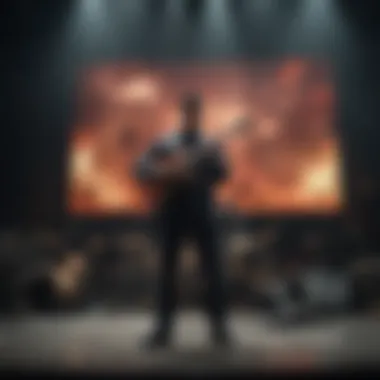
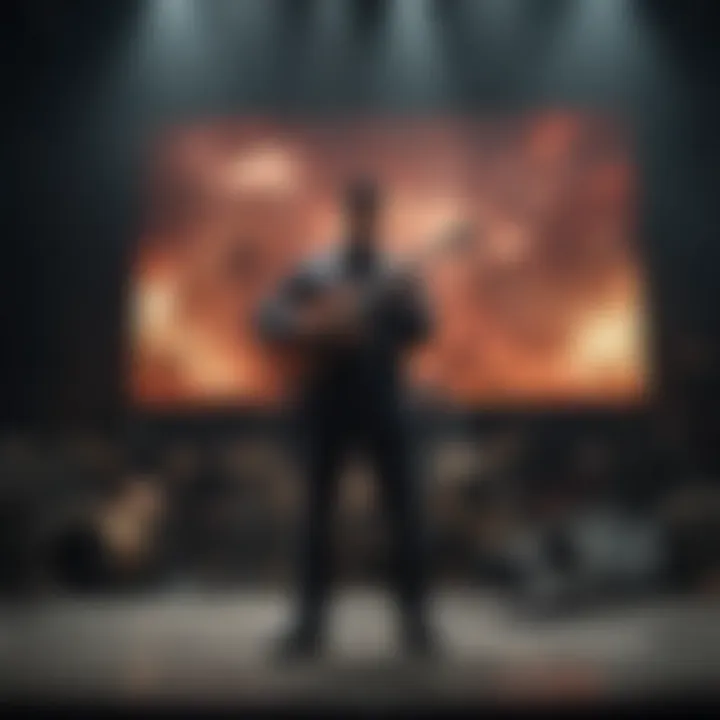
Analyzing War Lyrics
War lyrics serve as a vehicle for emotional expression. They often contain stories of suffering, loss, and resilience. Artists like Bob Dylan and Johnny Cash have written songs that convey personal and collective anguish related to war. Analyzing these lyrics helps uncover layers of meaning. A close look at the language, imagery, and themes reveals how artists encapsulate the horrors of war.
Some key elements to consider in war lyrics include:
- Imagery: Vivid descriptions ground the listener in the experience of war. Terms like "battlefield" and "fallen soldier" evoke strong mental pictures.
- Emotion: Lyrics can elicit a strong emotional response. Lines about loss can resonate with anyone familiar with grief.
- Historical Context: Many war songs are tied to specific events. Understanding the historical backdrop can enrich the meaning of the lyrics.
Moreover, combining personal narrative with broader social commentary amplifies the impact of these songs. Artists often draw from personal experiences, yet their stories reflect societal pain, creating a connection that deepens the listener's engagement with the material.
Music Videos as War Commentary
Music videos add another layer to the discourse surrounding war themes. They extend the narrative beyond the lyrics. Through visuals, artists can depict the consequences of conflict, making abstract concepts more tangible. For example, visuals may illustrate scenes of protest, destruction, or solidarity, amplifying the message in the song.
In examining war-themed music videos, several important aspects emerge:
- Symbolism: Visual elements often symbolize broader themes. Red and black may evoke ideas of danger and death.
- Juxtaposition: Many videos contrast images of war with scenes of everyday life. This stark comparison emphasizes the impact of war on society as a whole.
- Cinematic Techniques: The use of lighting, editing, and framing can enhance the emotional weight of the visuals. Slow-motion shots may highlight tragedy, while rapid cuts could convey chaos and urgency.
Music videos serve not only as artistic expression but also as social critique. They inform the audience's perception of war and encourage reflection on its broader implications.
Combining lyrics and visuals creates a multidimensional narrative. This synthesis enables artists to express complex ideas about war effectively, facilitating a deeper understanding of the conflicts they address. As we explore the enduring impact of war-related music, it is essential to appreciate how these components work together to shape cultural discourse.
Contemporary Issues in War Music
The landscape of war music today is deeply intertwined with contemporary issues that both reflect and shape public perception of conflict. This topic is vital as it not only examines the artistic expression through musical genres but also highlights the societal frameworks within which these expressions occur. Music serves as a vehicle for exploring the immediate impact of global conflict. Artists today grapple with real-time events, translating raw emotion into creative forms that resonate with diverse audiences.
In this age of rapid information dissemination, understanding the contemporary context of war music allows us to appreciate the intricate relationship between society and the art it produces. With technology advancing and social structures evolving, musicians frequently adapt their themes and messages to align with current global sentiments.
The Influence of Social Media on War Themes
Social media has significantly altered the way war music is created, distributed, and consumed. Platforms like Facebook, Twitter, and Instagram provide artists with unprecedented access to audiences, allowing them to share their views on conflict directly and instantaneously. For instance, hashtags like #WarMusic or #ProtestSongs can rally listeners while also serving as a channel to promote their work.
Moreover, social media creates a space for dialogue and interaction among listeners. Fans can engage with the music, discuss lyrics, and share personal interpretations, which amplifies the social impact of the songs. This dynamic environment helps to foster community and galvanize movements, making music a potent tool for activism.
Emerging Artists and War Narratives
The realm of war music is not stagnant; it evolves constantly as new artists emerge, bringing fresh perspectives to the conversation on conflict. These musicians often draw from personal experiences, cultural backgrounds, and contemporary issues, enriching narratives with authentic insights. Emerging artists have a unique power to reshape traditional war narratives, pushing boundaries and challenging existing norms.
Many contemporary musicians reflect the complexities of modern warfare, tackling subjects such as psychological trauma, displacement, and the moral implications of conflict. This new wave of artists often meld genres, incorporating elements from different styles to convey messages that resonate with a younger audience. Artists like Hozier and Dua Lipa, for example, weave themes of conflict into their broader discographies, making the songs relatable and accessible.
Music serves not only as a mirror to society but also as a catalyst for change and a tool for education regarding war.
Understanding the voices of these new musicians is crucial. They contribute to the larger narrative surrounding conflict, raising awareness and inviting listeners to reflect on the consequences of war. As these artists continue to emerge, their work will shape the future direction of how war music is viewed, experienced, and understood across the globe.
Endings
The exploration of war and music reveals a complex interplay that impacts lives and shapes cultural identity. This article discusses the ways in which music serves not only as a reflection of conflict but as a powerful tool for shaping narratives around war. The significance of war music is multifaceted, offering insights into human emotions and societal struggles. It acts as a conduit for expressing grief, solidarity, and resistance, making it essential in understanding historical and contemporary conflicts.
The Enduring Power of War Music
War music possesses a unique and lasting resonance. Its ability to evoke profound emotions makes it an enduring element of human expression. Through various forms of music, genres such as rock, classical, and hip-hop articulate themes of valor and tragedy. They provide a voice for those impacted by war. For instance, Bob Dylan's protest songs not only narrate personal experiences but also foster a collective consciousness against conflict. The intertwining of music and war continues to play a vital role in how societies cope with loss and trauma.
- Emotional Impact: Music evokes feelings that words alone may not capture. During times of conflict, songs can provide solace and understanding.
- Political Commentary: Artists often use their platform to critique war. This serves not only as a form of protest but helps to raise awareness about struggles faced by individuals.
- Historical Documentation: Many war-themed songs serve as historical records, chronicling events from the perspective of those who lived through them.
Future Directions in Music and Conflict
The landscape of war music is ever-evolving. Advancements in technology and social media have transformed how artists can share their work and amplify their messages. Emerging platforms offer a stage for diverse voices, pushing the boundaries of what war music can entail. As music continues to intersect with global events, the following trends may shape its future:
- Increased Collaboration: Artists across genres and cultures may collaborate, introducing new perspectives on conflict.
- Digital Engagement: Social media allows real-time responses to war-related issues, facilitating immediate conversation and connection.
- Diverse Narratives: Emerging artists from various backgrounds explore personal and cultural experiences of war, enriching the narrative with varied viewpoints.
The analysis of music in relation to war is not simply an academic endeavor; it reflects the heart of human experience. As we move forward, understanding these themes will continue to encourage dialogue, empathy, and critical thought regarding conflict.
"Music is the shorthand of emotion." – Leo Tolstoy
The conclusions drawn here reveal that the investigation of war through music is vital for understanding not just artistic expression but humanity's response to ongoing and historical conflicts.







